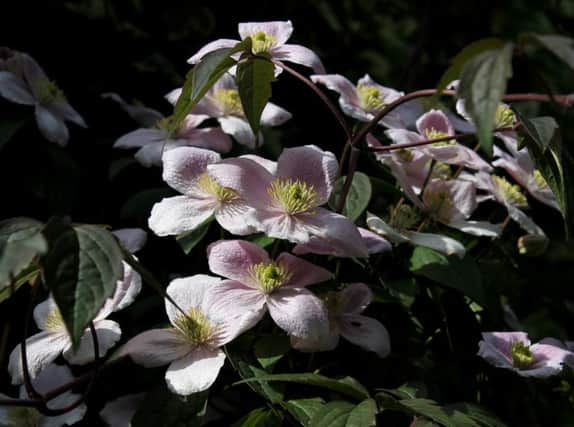Gardening: Snipping news


But when they, too, have done their blooming, what happens? Do you prune or do you forsake the secateurs and hope Nature will see that everything’s all right next year?
Because when to prune a clematis has always proved to be a dilemma.
Advertisement
Hide AdAdvertisement
Hide AdMontana is a safe bet – it’s so tough and so energetic that it doesn’t seem to mind a short back and sides once it’s finished flowering. In fact, it needs tough treatment to stop it from taking over.
But don’t try the same treatment with the early- and late-flowering varieties.
As a rule of thumb, if a clematis blooms before the end of June, prune it as soon as it has flowered by cutting back the sideshoots to 2-3 buds off the main framework. If it blooms after June, prune it back hard in February.
The late-summer bloomers, like ‘Ville de Lyon’ and that gloriously seductive ‘Comtesse de Bouchard’ flower on new wood, so that early-spring cut-back is essential for a good show later in the sane year.
Advertisement
Hide AdAdvertisement
Hide AdSo, just cut all the stems right down to the bottom pair of buds; in fact, almost to the ground.
The only time you serve up the same sort of treatment to the spring and early summer bloomers is when they are newly-planted; by pruning them to shape, you encourage stronger growth and a sturdier framework for future years. But if in doubt, leave well alone.
Pruning clematis has always a task steeped in myth and mystery.
Despite the British gardener’s penchant for growing vast numbers of this most beautiful of flowering shrubs, when it comes to keeping them in shape and encouraging them to bloom again, when to cut, where to cut and how to cut are three questions which crop up annually.
Advertisement
Hide AdAdvertisement
Hide AdBut once you know into which category your clematis falls, it’s pretty obvious when – and how – they need pruning.
And while you’re doing the job, try a bit of propagation from the clippings.
Cut between leaf joints, leaving a longish stem with just one pair of leaves at the top. Put them into pots and cover with polythene.
Then leave them for a couple of months in a shady spot.